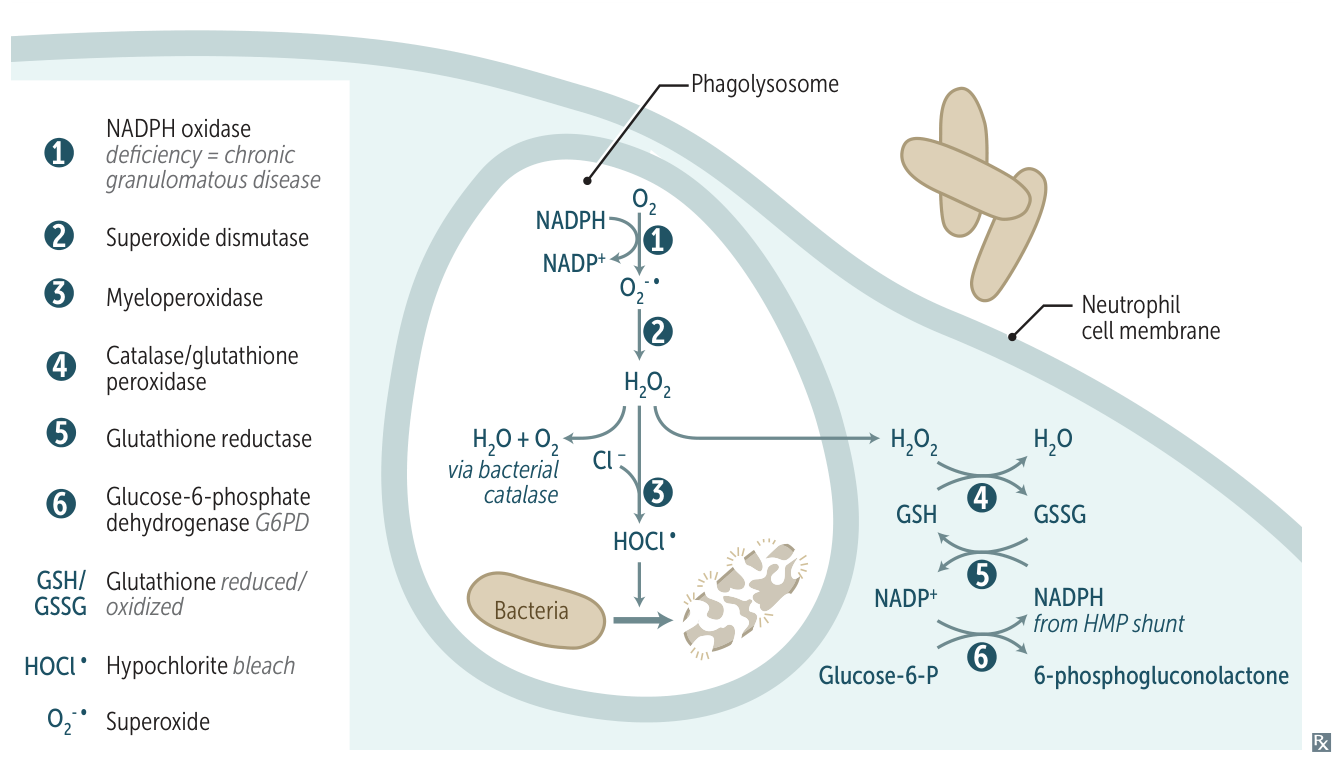Respiratory burst
- Description
- Phagocytes (e.g., neutrophils, monocytes) ingest pathogens
- Activation of the NADPH oxidase complex generates and releases reactive oxygen species (ROS; free radicals) that destroy the pathogens in phagosomes
- Mechanism

- NADPH oxidase complex
- Can generate oxygen radicals (•O2–) from O2, but also to neutralize them
- Defective NADPH oxidase leads to chronic granulomatous disease.
- Superoxide dismutase: generates hydrogen peroxide (H2O2) from •O2–
- Myeloperoxidase: an enzyme in neutrophil granulocytes
- Generates hydroxyl-halide radicals (HCl•O) from H2O2 and Cl-
- Contains heme pigment responsible for the occasionally blue-green color of pus and sputum
- Release of oxidative burst causes K+ influx, which triggers secretion of lysosomal enzymes into the phagosome.
- NADPH oxidase complex
| Rank | ROS Species | Potency/Reactivity | Key USMLE Fact |
|---|---|---|---|
| 1 | Hydroxyl Radical (•OH) | Extreme | Most biologically reactive ROS; formed from H₂O₂ via the Fenton Reaction. |
| 2 | Hypochlorous Acid (HOCl) | Very High | "Bleach"; produced by myeloperoxidase in neutrophils to kill pathogens. |
| 3 | Superoxide (O₂•⁻) | Moderate | Initial ROS made by NADPH oxidase in the respiratory burst. |
| 4 | Hydrogen Peroxide (H₂O₂) | Low | Stable precursor to •OH and HOCl; can diffuse across membranes. |
- Clinical significance
- Respiratory burst is a vital component of innate immune response
- Impaired respiratory burst leads to an elevated risk of infection with catalase-positive pathogens (e.g., Aspergillus, S. aureus).
- Normally, phagocytes can transform H2O2 generated by invading pathogens into ROS.
- Catalase-positive organisms can degrade their own H2O2, leaving phagocytes without substrate to convert.
- P. aeruginosa uses pyocyanin to form ROS and eliminate competing organisms.